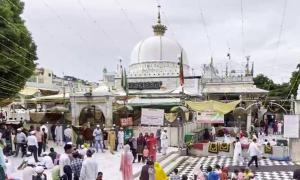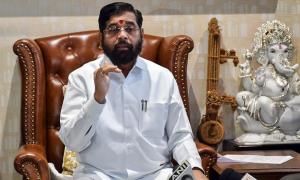Tourist arrivals to India increased to 4.43 million in 2006, up 14.2 per cent from 3.92 million in 2005. The foreign exchange earnings from tourism grew to $6.569 billion in 2006, an increase of 14.6 per cent from 2005.
While the government is hailing the increase in tourist arrivals as a significant achievement, the tourism industry is not equally excited.
"These numbers also include the non-resident Indians that make more than one trip to India every year. That should not be counted as growth in tourism. We are way behind other countries. A small place like Macao registered 21.99 million tourist arrivals in 2006," says an industry expert.
Singapore received 9.5 million tourists in 2006, almost twice that of India. According to Madrid-based World Tourism Organisation - the tourism watchdog of the United Nations - a total of 842 million international tourist arrivals were recorded last year. However, India's share was only 0.52 per cent of the global pie.
But, there is another angle to India's tourism story. For instance, the average duration of stay of a tourist in Singapore is 4.2 days, as against 26 days in India, according to the official data, and 12 days, according to the Indian tourism industry.
"Among the leisure tourists who arrive in India, those from the Far East stay for roughly six to eight days, the Dutch and the French stay for about 18-22 days, the British, Germans and Swiss average at 10 days. The Americans like to stay longer for about 14 days," says Himmat Anand, chief operating officer, Sita Destination Management.
"Tourism is growing in India. We did record a 14.2 per cent growth in 2006. But we cannot afford to just sit back. We need to actively promote ourselves so that we become the most preferred destination," says the head of one of India's largest travel agencies.
"The hotel industry has not kept pace with the open sky policy. So even if travel to India and within India has become cheaper, hotel rooms have only become more expensive," he adds.
Snippets
Give me room
There is a shortage of around 1.1 lakh hotel rooms in the country. Due to the massive gap between demand and supply, hotels have increased their average room rates by almost 18-22 per cent annually.
The tourism ministry has proposed to create a "land bank" by acquiring land for building hotels in public-private partnership on a built, operate and transfer basis. The urban development ministry has reportedly agreed to allot three sites in Delhi to the tourism ministry.
The Indian Railways has also decided to utilise its land inventory for hotels. The Indian Railways Catering and Tourism Corporation is planning to set up 100 budget hotels across the country within the next two years.
It has already awarded projects for the upgradation of its existing hotels in New Delhi, Ranchi and Puri, as well for the setting up new hotels in Mumbai. The IRCTC will shortly issue tenders for new hotels in Chandigarh, Hyderabad and Bangalore.
In addition to this, the tourism ministry has brought out guidelines for classification of apartment hotels, time share resorts and guest houses. It has sanctioned a capital subsidy for 43 budget hotels and an interest subsidy for 86 hotels of the same category.
The ministry has also decided to build up the required inventory of budget category rooms through recognition of spare rooms available with various house owners by classifying these facilities as 'Incredible India Bed & Breakfast Establishments', under Gold and Silver categories.
There is more good news. At least 146 new hotel projects, translating into 12, 623 rooms, have been approved by the ministry.
Village bound
The tourism ministry often says it is targeting "quality tourists", those who stay in India for a long duration and also those who spend more money. Luxury tourism is growing at 20-25 per cent, according to industry estimates.
Luxurious accommodations like Aman Resorts at Alwar and Ranthambore in Rajasthan have helped attract this category of tourists.
However, at the other end of this spectrum, the ministry has sanctioned 102 rural tourism infrastructure projects. According to the government, rural tourism is aimed at "spreading tourism and its socio-economic benefits to identified rural sites having tourism potential".









More from rediff